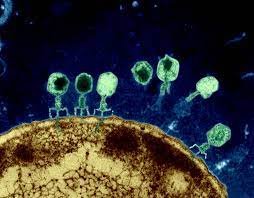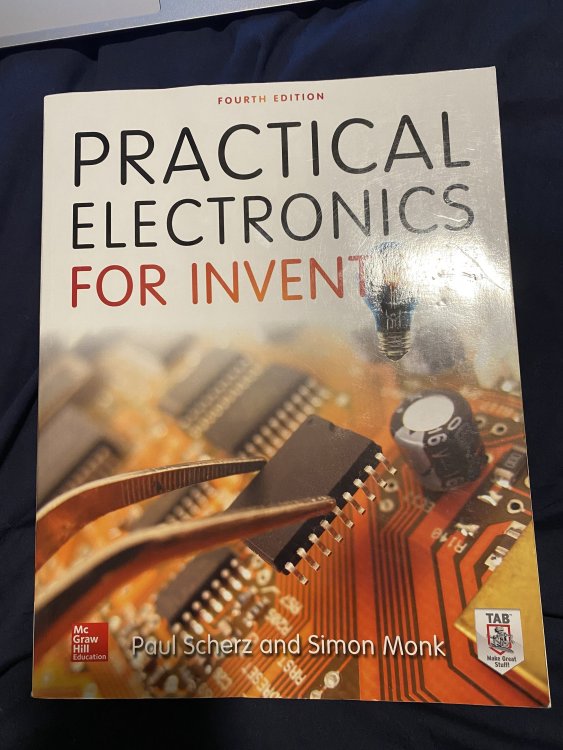-
Posts
15 -
Joined
-
Last visited
Content Type
Profiles
Forums
Events
Everything posted by KyleLeClair
-
Hello everybody, I have created a proposed StackExchange for SolidWorks Electrical users. I'm curious if anybody on the forum is interested in the topic and if so what has been your experience with the software? Any tips and tricks you may have would be appreciated. I'm not sure if I can link the site here, but if your interested its located on StackExchange Area51 under "SolidWorks Electrical". There's so little resources for this software online, any input and support would be beneficial for the community.
-

Best Book Author for Artificial Intelligence
KyleLeClair replied to adisharma's topic in Engineering
Hey adisharma, I would recommend Principles of Artificial Intelligence by Nils John Nilsson (ISBN 0-935382-01-1). Its an older book published in 1980 but it covers fundamental ideas well. Nils John Nilsson is a founding researcher of AI. *Link removed* Hope this helps. -
Great observation, that does seem more likely.
-
@Peterkin Thanks for the interesting links. I also thought that recalling it was abnormal, it definitely intrigued my mother. This is precisely how it went! It's incredible that this is a common human experience. How interesting is that.
-
Dreams in my life have always been weird. Here's a few specific examples of the most compelling experiences during my dreams. When I was young, 3-7 years old, I would have constant dreams of being able to naturally fly. The dream would either take place in my elementary schools gymnasium or in the adjacent field. The dream was so vivid that to this day I could explain in detail the experience of "biologically gifted" flight. The way the buildup feels, that moment of transition from building momentum to flight, the feeling during flight, the wind, the forces, drag, the danger of rolling to much, the futility of pitching to far up, etc. When I was a child I could explain these phenomena. It always spooked my family. I remember being in my mothers womb and could explain what it looked like (dim light permeating through her midsection at the later stages of her 3rd trimester). As an adult, there has been a handful of times that I was able to see or experience a complex solution in my dream. They would always occur when working on a really taxing problem. Such as the first time I was designing something with a CMOS based thermal sensor. I was having issues with the PCB layout, specifically the fanout of the BGA, and in my dream I saw the solution. I actually woke up and directly went to my desk; it worked. The same thing has happened with a few other circuit design hang-ups but that was the most notable. I've also had it happen with some mechanical design, especially UI on rack equipment. I've dreamed of using what I'm designing at the time and the panel ends up being different in the dream. Again, I instantly hit the desk when I wake up and it works out great. The first two experiences I can't chalk up to anything. There's no feasible explanation of why a 3 year old can explain flight characteristics. That has always baffled my family and I. The second example is actually more common that you would think. And the third example I think speaks on the subconscious and conscious ecosystem. It's an amazing experience none-the-less. I never ignored these phenomena but it wasn't something I discussed with others besides close friends and family. I just didn't see the need to I suppose. As an adult, the experiences kind of aligned with my interest of the mammalian nervous system so I naturally did some research. I never thought it was paranormal in the classical sense of what paranormal means in pop culture. But I do think that there is a sizable amount of modalities in the mammalian nervous system that we simply are not close to understanding. I've hypothesized that our neurons could have generational memory at birth causing an affinity to structure ones neural pathways. Far fetched I know, but this concept has been studied before. Specifically this phenomena as it relates to the paranormal. "ABSTRACT: The authors present both unconfirmed and externally confirmed cases of children’s pre-existence memories with paranormal aspects that apparently cannot be explained by childish fantasy. The anomalous phenomena mostly comprise extrasensory perception with one case involving psychokinesis. Such aspects are similar to and convergent with paranormal aspects of neardeath experiences and point to a common, non-physical origin of both types of experiences." (1) Dynamic biological processes are neither nature or nurture but can often be a combination therefore of both. Just as breathing and balance are part of the brain stems function's, so it suckling. This biological action of suckling that we are born with allows the latching mechanism to take place. Latching is intrinsically a biological function that is discovered by the infant through the mothers ability to nurture this action into existence. This is critical for most of human existence and still critical in much of the world today (access to formula). I'm not educated enough to fully delve into the scientific reasoning of many of these phenomena. I don't think as a community any of us truly are. But, it's definitely something that guides my objective curiosity. Very cool topic to explore. (1) Rivas, Titus; Carman, Elizabeth M.; Carman, Neil J. & Dirven, Anny. Paranormal Aspects of Pre-Existence Memories in Young Children, article, Winter 2015; Durham, North Carolina. (https://digital.library.unt.edu/ark:/67531/metadc948119/: accessed August 19, 2022), University of North Texas Libraries, UNT Digital Library, https://digital.library.unt.edu; .
-
Regarding the helpfulness of viruses on the human body, phages, a Duplodnaviria virus has been used in place of antibiotics when the carrier is resistant to antibiotic therapy. Phage therapy was used as far back as the early 20th century. It was abandoned when antibiotics were invented, but as we move into an age of resistance, phage therapy has reemerged as an innovative approach to this problem. "Most phages are infectious only to the bacteria that carry their complementary receptor". (Lin, Koskella, Lin) This of course can be utilized to our advantage. For example, Escherichia virus T4 (the species of bacteriophages that infect Escherichia coli (E-Coli) bacteria) is being optimized to fight E-Coli outbreaks in food and drug supplies. Specifically, the advancements of Clustered Regularly Interspaced Short Palindromic Repeats (CRISPR)/Cas 9 editing process is facilitating the biosynthesis necessary to optimize phages for health and safety implementations. Also, RNA Phage VLP vaccines are in development and are a promising and powerful alternative approach to vaccines compared to conventional methods. These are just a few examples how viruses can be good for humans. I know that the last two examples are modified uses of naturally forming viruses. But phages naturally do some of these processes in their host without any human intervention. They're truly a robust bio-entity. Viruses are the most abundant bio-entity in the ocean, the majority of those viruses are bacteriophages. Discovering 1000s of of new viruses! Holy smokes, we could treat some serious disease with this discovery. (1) Lin DM, Koskella B, Lin HC. Phage therapy: An alternative to antibiotics in the age of multi-drug resistance. World J Gastrointest Pharmacol Ther. 2017 Aug 6;8(3):162-173. doi: 10.4292/wjgpt.v8.i3.162. PMID: 28828194; PMCID: PMC5547374.
-

AI program has possibly discovered new physics variables
KyleLeClair replied to Royston's topic in Science News
Maybe we're moving into the direction of necessary AI duality. It might be a useful endeavor to create an AI with pre-learned physics, mathematics, etc (as we currently understand it) to analyze and rationalize the output and modality of the "discovery" AI. Of course this is a mega endeavor, but I would bet that its already being researched in industry or academia. -
Here's a useful tree diagram of the different vacuum pumps technologies used in a lab environment. I retrieved it from Vacuum Science World. It's a good thing to keep around. When I decide what pumps should be implemented I go through a thought process that ask the following questions.. Is the experiment feasible at my price range? (Torr 10^(-?) vs Cost) Can I risk or mitigate oil contamination? What's my primary? > Roughing Stage What's my secondary? > High Vacuum Stage What gas is being inserted or removed from the chamber? Can heat producing capture methods be used? Does residual gas need to be removed? What reactivity does the inserted gas have? Inert or reactive? What is my capture? > Sustainment Stage Is there any safety devices I need? (reverse flow media restrictor, flame arrestors, etc) You can look into the nomenclature and theory of operation of all these pumps, some are very interesting. Also, the textbook Building Scientific Apparatus By John H. Moore (ISBN:0521878586) has tons of fantastic information regarding UHV chambers, glass blowing, system design, pump design, etc. I recommend adding it to the bookshelf.
-

Which Microscope is better: OMAX or Amscope ?
KyleLeClair replied to microbelover's topic in Amateur Science
I have a small AmScope (40X-1000X Portable LED Monocular Student Microscope w/ Mechanical Stage) that I use for simple hobby discovery and biology endeavors. Nothing professional on the biology end of the spectrum. But, their stereo microscopes are great for micro/miniature PCB soldering and repair. General electronics fabrication for that matter. It's great for inspecting things such as connector pins, solder cups, tinning, etc. The price for them is great compared to other manufacturers, but you'll get a reasonably professional solution compared to cheaper Amazon solutions. -
You're going to want to calculate the sum of your Propellent Mass and Empty Mass . Then you can create a test apparatus to get your Effective Exhaust Velocity and solve for . is the effective exhaust velocity is the specific impulse in dimension of time (In this case, it's proportional to the effective exhaust gas velocity.) is standard gravity is the natural logarithm function is the initial total mass, including propellant is the final total mass without propellant Check this post out for a general overview of how you could go about making the test apparatus to get thrust data. With this data you can then calculate if a launch is possible. From here you can use the Ideal Rocket Equation to predict the theoretical velocity of your rocket. https://www.grc.nasa.gov/www/k-12/rocket/rktpow.html I'm no rocket scientist, but this is where you're going to want to start. These methods aren't perfect, but will give you proximal results.
-

What is your favorite CAD design software and why?
KyleLeClair replied to JEI Learning Centers's topic in Engineering
It really depends on what you application is. If you're looking for a general CAD solution and can afford it, I'd say SolidWorks. I have juggled back and forth from SolidWorks and Fusion360 for around 4 years. If money was no object I would use SolidWorks hands down. The macro functionality alone makes it worth it. When I used it heavily in the DoD I had a "toolbox" of macros to create automatic 2D & 3D drawings (i.e. gears, splines, airfoils). You don't need an internet connection to run SolidWorks and the assembly functionality is much more robust. They offer an educational version for $50/Year or something, but you of course cant capitalize on any of your designs using it. I eventually broke down and just started using Fusion360. It's pretty polished but can be clumsy at times. I like that I can access projects from anywhere. They're starting to implement more "pay-to-play" features and you can only have 10 active parts at a time (ridiculous). Now that I'm a student it's plenty to build apparatuses or rack components. But be warned with Fusion360, if multi-page and robust drawings are necessary for your work. They only allow you to create one page at a time and its maddening. They now have 3DEXPERIENCE SOLIDWORKS for makers that looks like its $100 a year and pretty feature dense. -
The lack of reaction control systems or telemetry will mean uncontrolled thrust instabilities. Even if you were able to use non-powered linkage in the rocket to counteract these variances in flight; the small size and complexity of parts are prone to fail under the force and heat of the propellent. You theoretically could machine a part with stability fins. To keep the dimensions of a pen I would start the design with an ID of 8mm where the propellent will be stored. You will want to make this as long as it needs to establish a stable center of gravity with the propellent mass in mind. You can play with the OD in order to establish an equilibrated design giving you structural integrity and a proper center of mass. Empty Mass = mE Propellent Mass At Launch = mp = mp1 + mp2 + mp3 Propellent Mass During Coast = mpC = Δmp2 + mp3 You're going to find it difficult to make a composite rocket propellent that is able to give you launch, coast, and recovery capabilities in such a small constraint. Your launch phase mp will have to supply enough energy to overcome all the compositions. In flight, the coast phase will have to sustain the momentum of the launch phase and account for the changing mass while it burns off this section of solid fuel. To recover (i.e. a parachute) you will need an ejection charge. Rocket Composition EXHAUST |- LAUNCH(LIFT&ACCELERATE) -- COAST -- RECOVER(EJECTION) -| NOSE CONE The efficiency of the propellent is entirely depended on your personal level of skill in chemistry. So to make the presumption of the ability of this theoretical design to go farther than 10 meters would be speculatory at best. But you could test it before designing to establish the propellent force. Make a batch of C12H22O11. Make a suspended test fixture with an ID of 8mm and length of 110mm (matching you rocket design and compensating for the recovery components). Link a Force Gauge (pushing end) to the pushing end of the test fixture. Measure equal sections of propellent. Insert propellent into the test fixture making sure it's done the same way each test. Ignite and record findings. Do this 10 times and average. If this overcomes the mass of the rocket than you can move on to how long it will overcome the mass to make a prediction of the flight path and stability characteristics of the rocket. By no means am I a rocket scientist, but I do have working exposure to missiles to include hypersonic missiles. I hope this can put you in the correct headspace and orient you in the correct position.
-

what is your favourite book in engineering sciences?
KyleLeClair replied to ahmet's topic in Engineering
Absolutely, it's the 4th edition authored by Simon Monk and Paul Scherz. McGraw Hill is the publisher. The edition I have now was published in 2016, but I was using the 3rd during school. the text is currently $32.00 on Amazon, quite a steal in my opinion. -
Love this! Thank you.
-

what is your favourite book in engineering sciences?
KyleLeClair replied to ahmet's topic in Engineering
When I was doing my formal training in the military, I supplemented classwork that was very watered down with Practical Electronics for Inventors. It opened up my eyes to the amazing world of EE.



